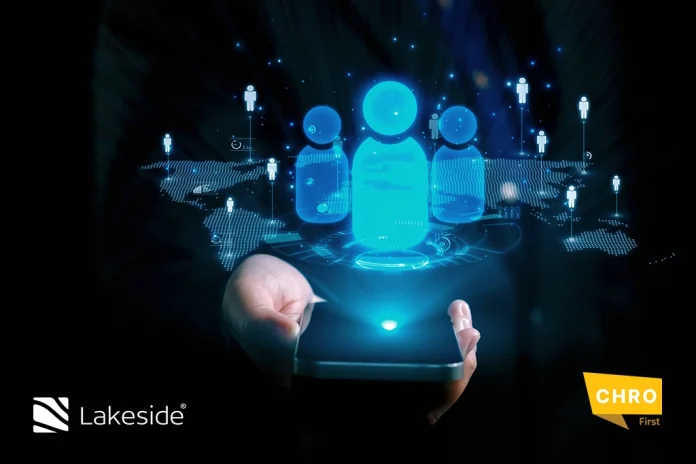Lakeside Software, a leader in digital employee experience (DEX) solutions, unveiled SysTrack AI, a new agent-driven platform that brings real-time diagnostics, cause-and-effect insights and prescriptive actions to employee devices and IT operations.
Built on over 20 years of edge telemetry and analytics expertise, SysTrack AI allows enterprise IT, end-users and applications to interact with contextual intelligence drawn from millions of signals captured across devices. Some key capabilities include:
For IT Engineers: Level 1 support teams can now ask plain-language questions like “Why is this device slow?” and receive actionable answers (e.g., “High CPU usage from recent patch affecting 12% of users”) backed by audit-trailing and root-cause telemetry.
For End Users: Employees use chat or voice, like Microsoft Teams, for self-service workflows. They can troubleshoot common issues and escalate to higher-privilege support when needed.
For IT Applications / AIOps: SysTrack AI works with IT service-management tools, such as ServiceNow, collaboration platforms, and AI frameworks, including OpenAI. This integration enhances workflows and triggers autonomous operations.
According to Lakeside’s CEO, the platform transitions DEX from “automated” to “agentic” — meaning the system is not just reporting issues but reasoning about what’s happening and prescribing remediation.
Implications for the HR / Employee Experience Industry
- Enhanced Employee Experience & Productivity
For HR and workplace leaders, SysTrack AI is a major advance. Instead of dealing with slow devices or IT issues, workers can now solve problems on their own or get quicker help. This leads to fewer interruptions, higher engagement, less downtime, and greater satisfaction with digital tools.
- Digital Workplace Strategy Becomes Proactive
HR teams now handle more than just employee culture and talent. They also focus on the digital experience that boosts productivity. With SysTrack AI, HR and IT can move from reactive support to proactive incident avoidance. This means they can identify patterns of device or performance issues before they escalate. This helps protect roles, morale, and retention.
- Data-Driven Workforce Insights
The platform’s telemetry and diagnostics provide clear data on device use. It shows where employees face issues and how tools impact workflows. HR and EX leaders can use this data to improve device deployment, training, and digital tool rollouts. It also helps guide their DE&I and hybrid work strategies.
- Aligning Support with Employee Expectations
In today’s hybrid and remote-friendly world, employees seek smooth digital experiences. HR leaders looking for better tools or budgets can use SysTrack AI data to back their requests. This data shows ROI by highlighting key metrics, such as reduced downtime, quicker resolutions, and improved device performance.
- Changing HR-IT Collaboration
As workplace operations become more technology-embedded, HR and IT must collaborate tightly. SysTrack AI reinforces this convergence: HR defines experience goals, IT measures and optimises against them. This alignment can elevate HR’s strategic role and transform how organisations think about the employee lifecycle and device ecosystem.
Also Read: O’Reilly’s New MCP Server Integrates Learning Directly Into Enterprise AI Tools
Broader Effects on Businesses
Operational Efficiency & Cost Reduction
By empowering frontline support (Level 1) to resolve issues, businesses cut support costs and simplify workflows. Quicker issue resolution leads to less downtime and fewer productivity delays. This boosts operational efficiency and positively impacts the bottom line.
Scalable Digital Experience Management
In organisations with large device fleets—desktops, laptops, mobile, hybrid—they need scalable solutions. SysTrack AI’s cloud-native, agentic architecture supports thousands or millions of endpoints, enabling consistent experience-management no matter the scale or geography.
Better Risk Management and Security
With device intelligence down to CPU/GPU/NPU utilisation and telemetry across edge devices, businesses gain better observability into device health, performance, and potentially security risk (e.g., unusual CPU loads). For compliance-sensitive industries, the ability to act rapidly on this intelligence is increasingly strategic.
Stronger Talent Retention and Digital-First Culture
When employees see their tools as helpful, it boosts engagement and retention. Companies that provide smooth digital experiences stand out in competitive markets. They make employee experience part of their value, not just a cost.
Challenges & Considerations
Privacy and Data Governance: Capturing data at the device level raises concerns about privacy, consent, and governance. HR and IT must be clear about what data is tracked and how it is used.
Change Management: Launching a new DEX platform needs training and adjustment. Employees and support staff must trust and engage with the new workflows to gain full benefits.
Integration with Legacy Systems: Organisations with disparate legacy IT stacks may find integrating SysTrack AI into existing toolsets and workflows a significant technical exercise.
Resource Allocation: To get full value, businesses must invest in monitoring, dashboarding, analytics and governance workflows—not just deploy the platform and assume benefits will flow automatically.
Conclusion
Lakeside Software’s launch of SysTrack AI is a key step in improving digital employee experience. It adds smart diagnostics, self-service workflows, and device-level data to everyday endpoints. This gives HR, IT, and business leaders a strong tool to boost productivity and engagement. A digital-tools strategy is essential for HR and employee-experience professionals in workforce planning. For businesses, the message is clear. In a hybrid work setting, managing devices means managing culture, performance, and growth too.

